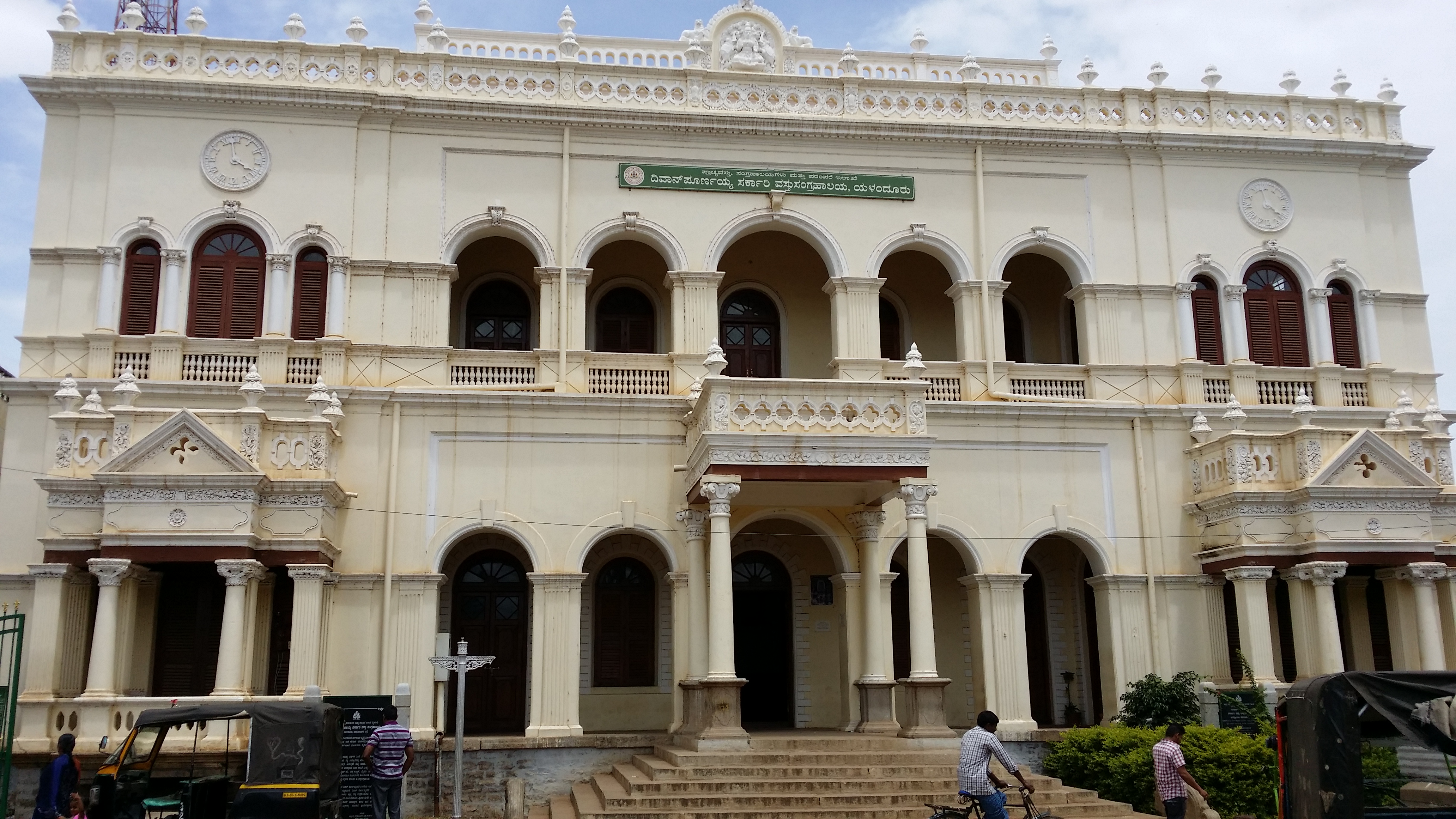|
Josiah Webbe
Josiah Webbe (April 1767 – 9 November 1804) was an English East India Company servant who worked as Chief Secretary at Madras and as a Resident at Mysore and later in the court of the Maharaja of Scindia. Webbe was the son of George Webbe of Nevis and Mary Fenton Dasent and entered the service of the East India Company as a writer on July 26, 1783. His ability to deal with Indian languages made him popular. He advised against hostile actions towards Tipu Sultan which displeased Lord Mornington and the directors of the East India Company leading to his removal from the service of Arthur Wellesley. In 1803, he was posted Resident to the newly acquired kingdom of Mysore and the next year, he was posted by Wellesley to the Court of the Maharaja of Scindia in Gwalior. He died at Hussainabad on the banks of Narmada. A monolithic granite obelisk to him was erected at Srirangapatnam by Dewan Purnaiah. A monument by John Flaxman John Flaxman (6 July 1755 – 7 December 1826) was ... [...More Info...] [...Related Items...] OR: [Wikipedia] [Google] [Baidu] |
Josiah Webbe
Josiah Webbe (April 1767 – 9 November 1804) was an English East India Company servant who worked as Chief Secretary at Madras and as a Resident at Mysore and later in the court of the Maharaja of Scindia. Webbe was the son of George Webbe of Nevis and Mary Fenton Dasent and entered the service of the East India Company as a writer on July 26, 1783. His ability to deal with Indian languages made him popular. He advised against hostile actions towards Tipu Sultan which displeased Lord Mornington and the directors of the East India Company leading to his removal from the service of Arthur Wellesley. In 1803, he was posted Resident to the newly acquired kingdom of Mysore and the next year, he was posted by Wellesley to the Court of the Maharaja of Scindia in Gwalior. He died at Hussainabad on the banks of Narmada. A monolithic granite obelisk to him was erected at Srirangapatnam by Dewan Purnaiah. A monument by John Flaxman John Flaxman (6 July 1755 – 7 December 1826) was ... [...More Info...] [...Related Items...] OR: [Wikipedia] [Google] [Baidu] |
East India Company
The East India Company (EIC) was an English, and later British, joint-stock company founded in 1600 and dissolved in 1874. It was formed to trade in the Indian Ocean region, initially with the East Indies (the Indian subcontinent and Southeast Asia), and later with East Asia. The company seized control of large parts of the Indian subcontinent, colonised parts of Southeast Asia and Hong Kong. At its peak, the company was the largest corporation in the world. The EIC had its own armed forces in the form of the company's three Presidency armies, totalling about 260,000 soldiers, twice the size of the British army at the time. The operations of the company had a profound effect on the global balance of trade, almost single-handedly reversing the trend of eastward drain of Western bullion, seen since Roman times. Originally chartered as the "Governor and Company of Merchants of London Trading into the East-Indies", the company rose to account for half of the world's trade duri ... [...More Info...] [...Related Items...] OR: [Wikipedia] [Google] [Baidu] |
Tipu Sultan
Tipu Sultan (born Sultan Fateh Ali Sahab Tipu, 1 December 1751 – 4 May 1799), also known as the Tiger of Mysore, was the ruler of the Kingdom of Mysore based in South India. He was a pioneer of rocket artillery.Dalrymple, p. 243 He introduced a number of administrative innovations during his rule, including a new coinage system and calendar, and a new land revenue system, which initiated the growth of the Mysore silk industry. He expanded the iron-cased Mysorean rockets and commissioned the military manual ''Fathul Mujahidin''. He deployed the rockets against advances of British forces and their allies during the Anglo-Mysore Wars, including the Battle of Pollilur and Siege of Srirangapatna. Tipu Sultan and his father used their French-trained army in alliance with the French in their struggle with the British, and in Mysore's struggles with other surrounding powers: against the Marathas, Sira, and rulers of Malabar, Kodagu, Bednore, Carnatic, and Travancore. Tipu's ... [...More Info...] [...Related Items...] OR: [Wikipedia] [Google] [Baidu] |
Earl Of Mornington
Earl of Mornington is a title in the Peerage of Ireland. It was created in 1760 for the Anglo-Irish politician and composer Garret Wellesley, 2nd Baron Mornington. On the death of the fifth earl in 1863, it passed to the Duke of Wellington; since that date, the title has generally been used by courtesy for the heir apparent to the heir apparent to the dukedom. History The first earl was the eldest son of Richard Wesley, the first Baron Mornington. Richard Wesley, born Richard Colley, was elevated to the Peerage of Ireland as Baron Mornington, of Mornington, in 1746. He had inherited the Dangan and Mornington estates in County Meath on the death of his first cousin Garret Wesley in 1728. In the same year he was granted by Royal licence the new surname of Wesley (see below for earlier history of the family). His son, the second Baron, was made the first Earl of Mornington in 1760, and at the same time also became Viscount Wellesley, of Dangan Castle in the County of Meath, also ... [...More Info...] [...Related Items...] OR: [Wikipedia] [Google] [Baidu] |
Arthur Wellesley, 1st Duke Of Wellington
Arthur Wellesley, 1st Duke of Wellington, (1 May 1769 – 14 September 1852) was an Anglo-Irish soldier and Tory statesman who was one of the leading military and political figures of 19th-century Britain, serving twice as prime minister of the United Kingdom. He is among the commanders who won and ended the Napoleonic Wars when the coalition defeated Napoleon at the Battle of Waterloo in 1815. Wellesley was born in Dublin into the Protestant Ascendancy in Ireland. He was commissioned as an ensign in the British Army in 1787, serving in Ireland as aide-de-camp to two successive lords lieutenant of Ireland. He was also elected as a member of Parliament in the Irish House of Commons. He was a colonel by 1796 and saw action in the Netherlands and in India, where he fought in the Fourth Anglo-Mysore War at the Battle of Seringapatam. He was appointed governor of Seringapatam and Mysore in 1799 and, as a newly appointed major-general, won a decisive victory over the Maratha Co ... [...More Info...] [...Related Items...] OR: [Wikipedia] [Google] [Baidu] |
Srirangapatnam
Srirangapatna is a town and headquarters of one of the seven Taluks of Mandya district, in the Indian State of Karnataka. It gets its name from the Ranganthaswamy temple consecrated at around 984 CE. Later, under the British rule the city was renamed to Seringapatnam. Located near the city of Mandya, it is of religious, cultural and historic importance. The monuments on the island town of Srirangapatna have been nominated as a UNESCO World Heritage Site, and the application is pending on the tentative list of UNESCO. History Srirangapatna has since time immemorial been an urban center and place of pilgrimage. During the Vijayanagar empire, it became the seat of a major viceroyalty, from where several nearby vassal states of the empire, such as Mysore and Talakad, were overseen. When perceiving the decline of the Vijayanagar empire, the rulers of Mysore ventured to assert independence, Srirangapatna was their first target. Raja Wodeyar I vanquished Rangaraya, the then viceroy ... [...More Info...] [...Related Items...] OR: [Wikipedia] [Google] [Baidu] |
Dewan Purnaiah
Purnaiah (Purniya) (1746 – 27 March 1812), aka Krishnacharya Purniya or Mir Miran Purniya was an Indian Administrator and statesman and the 1st Diwan of Mysore. He has the rare distinction of governing under a sultan and a maharaja, Tipu and Krishnaraja Wadiyar III. He advised the monarchs of the Mysore kingdom from 1782 to 1811. He was known for his skill with accounts, prodigious memory and proficiency in several languages. He was also a wartime military commander while serving under Tipu Sultan. After Tipu Sultan's defeat, he served as the Diwan of Krishnaraja Wadiyar III. Krishnaraja was educated and trained by Purniah in his early years. Early years and rise Purniah came from an orthodox Deshastha Madhva Brahmin family. He was born in 1746 CE. He lost his father at the age of eleven and had to seek employment to support his family. He started writing accounts at a trader's shop. This grocer had close contact with a rich merchant, Annadana Shetty, who supplied larg ... [...More Info...] [...Related Items...] OR: [Wikipedia] [Google] [Baidu] |
John Flaxman
John Flaxman (6 July 1755 – 7 December 1826) was a British sculptor and draughtsman, and a leading figure in British and European Neoclassicism. Early in his career, he worked as a modeller for Josiah Wedgwood's pottery. He spent several years in Rome, where he produced his first book illustrations. He was a prolific maker of funerary monuments. Early life and education He was born in York. His father, also named John (1726–1803), was well known as a moulder and seller of plaster casts at the sign of the Golden Head, New Street, Covent Garden, London. His wife's maiden name was Lee, and they had two children, William and John. Within six months of John's birth, the family returned to London. He was a sickly child, high-shouldered, with a head too large for his body. His mother died when he was nine, and his father remarried. He had little schooling and was largely self-educated. He took delight in drawing and modelling from his father's stock-in-trade, and studied translat ... [...More Info...] [...Related Items...] OR: [Wikipedia] [Google] [Baidu] |
1767 Births
Events January–March * January 1 – The first annual volume of ''The Nautical Almanac and Astronomical Ephemeris'', produced by British Astronomer Royal Nevil Maskelyne at the Royal Observatory, Greenwich, gives navigators the means to find longitude at sea, using tables of lunar distance. * January 9 – William Tryon, governor of the Royal Colony of North Carolina, signs a contract with architect John Hawks to build Tryon Palace, a lavish Georgian style governor's mansion on the New Bern waterfront. * February 16 – On orders from head of state Pasquale Paoli of the newly independent Republic of Corsica, a contingent of about 200 Corsican soldiers begins an invasion of the small island of Capraia off of the coast of northern Italy and territory of the Republic of Genoa. By May 31, the island is conquered as its defenders surrender.George Renwick, ''Romantic Corsica: Wanderings in Napoleon's Isle'' (Charles Scribner's Sons, 1910) p230 * February 19 ... [...More Info...] [...Related Items...] OR: [Wikipedia] [Google] [Baidu] |
1804 Deaths
Eighteen or 18 may refer to: * 18 (number), the natural number following 17 and preceding 19 * one of the years 18 BC, AD 18, 1918, 2018 Film, television and entertainment * ''18'' (film), a 1993 Taiwanese experimental film based on the short story ''God's Dice'' * ''Eighteen'' (film), a 2005 Canadian dramatic feature film * 18 (British Board of Film Classification), a film rating in the United Kingdom, also used in Ireland by the Irish Film Classification Office * 18 (''Dragon Ball''), a character in the ''Dragon Ball'' franchise * "Eighteen", a 2006 episode of the animated television series ''12 oz. Mouse'' Music Albums * ''18'' (Moby album), 2002 * ''18'' (Nana Kitade album), 2005 * '' 18...'', 2009 debut album by G.E.M. Songs * "18" (5 Seconds of Summer song), from their 2014 eponymous debut album * "18" (One Direction song), from their 2014 studio album ''Four'' * "18", by Anarbor from their 2013 studio album '' Burnout'' * "I'm Eighteen", by Alice Cooper commonl ... [...More Info...] [...Related Items...] OR: [Wikipedia] [Google] [Baidu] |








